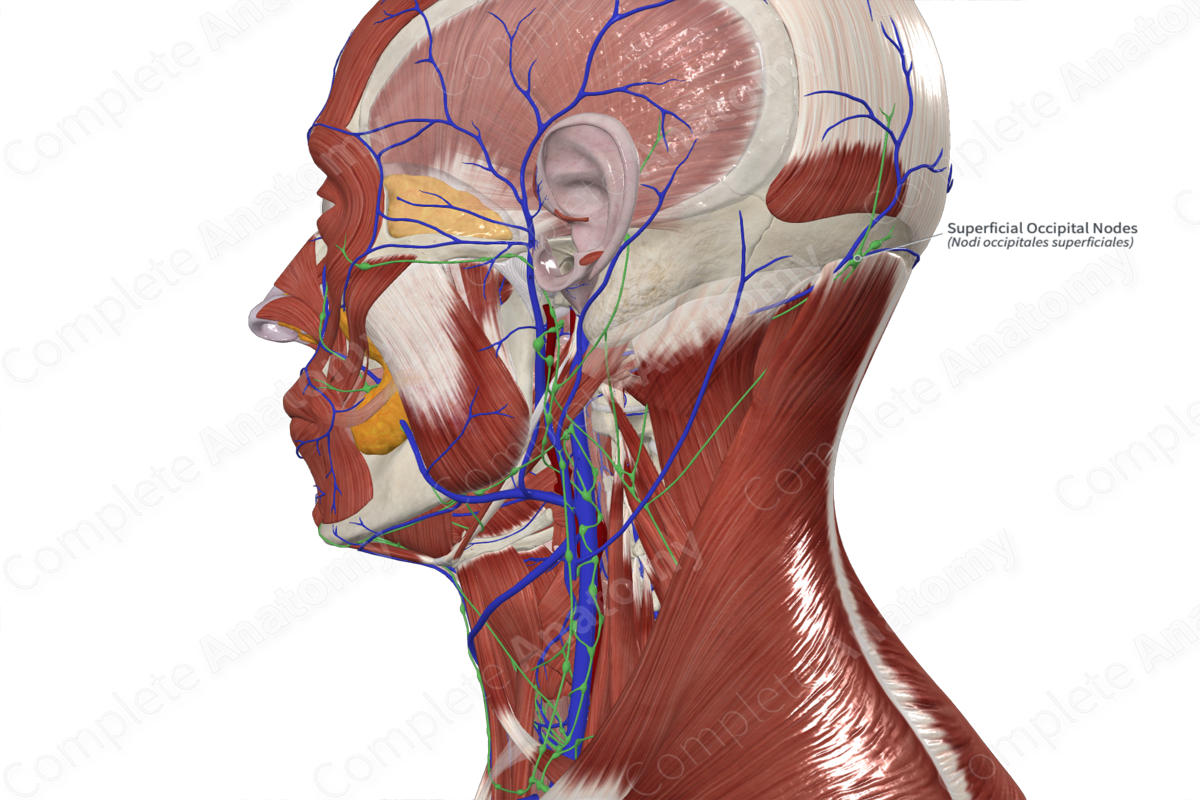
Quick Facts
Location: Back of the head, along the superior nuchal line.
Drainage: Superior half of the back of the neck and the skin covering the occiput.
Direction of Flow: Deep occipital nodes > sternocleidomastoid nodes > subtrapezius nodes > supraclavicular nodes > thoracic duct (left) or right lymphatic duct.
Related parts of the anatomy
Description
The superficial occipital lymph nodes drain interstitial fluid from the back of the neck and the scalp overlying the back of the head. There are usually one to three of these nodes which are superior to the origin of the descending part of trapezius muscle along the superior nuchal line, embedded in compact connective tissues and covered by the epicranial aponeurosis.
These small nodes are about the size of a lentil and collect lymph from the posterior scalp and the superior half of the posterior neck. Efferent vessels drain into the deep occipital nodes or directly into the sternocleidomastoid nodes, the most superior part of the accessory chain, so named due to its close relationship to the accessory nerve. Lymph flows inferiorly through the lateral aspect of the neck, over levator scapulae muscle into the right lymphatic duct or thoracic duct on the left (Földi et al., 2012).
References
Földi, M., Földi, E., Strößenreuther, R. and Kubik, S. (2012) Földi's Textbook of Lymphology: for Physicians and Lymphedema Therapists. Elsevier Health Sciences.



